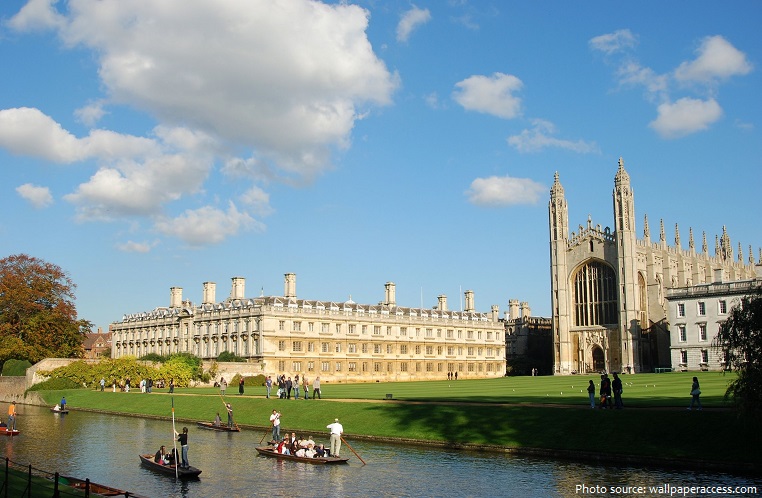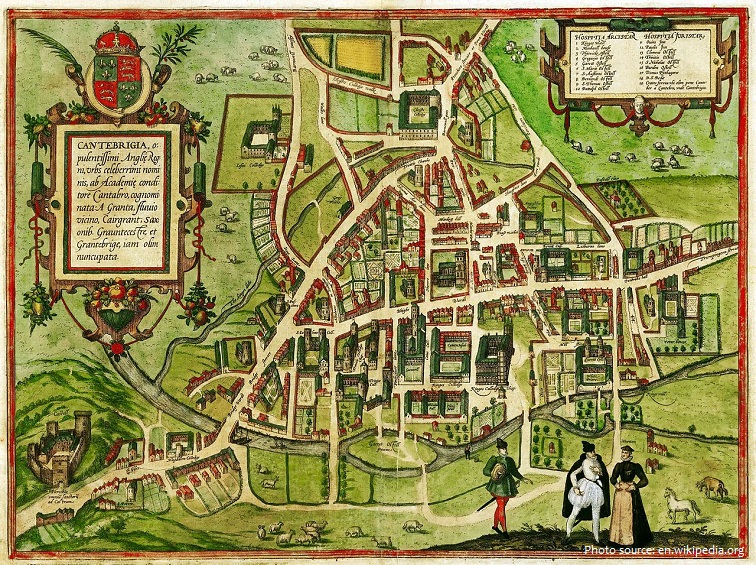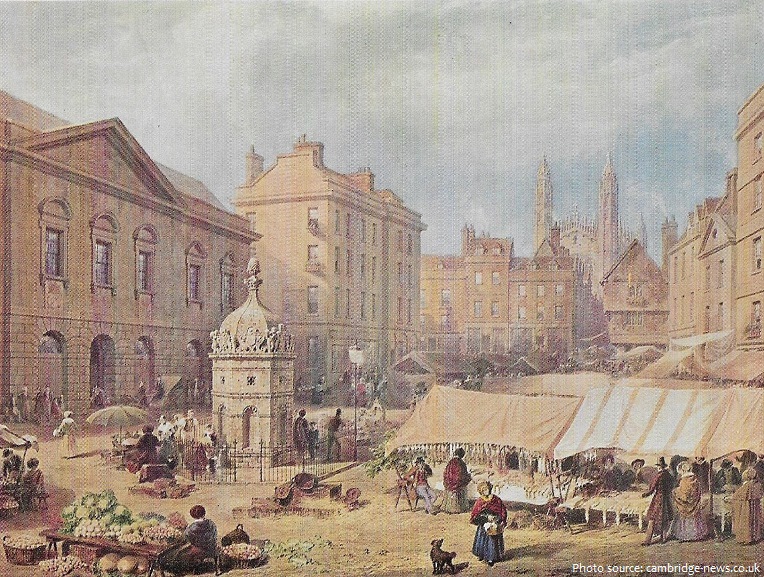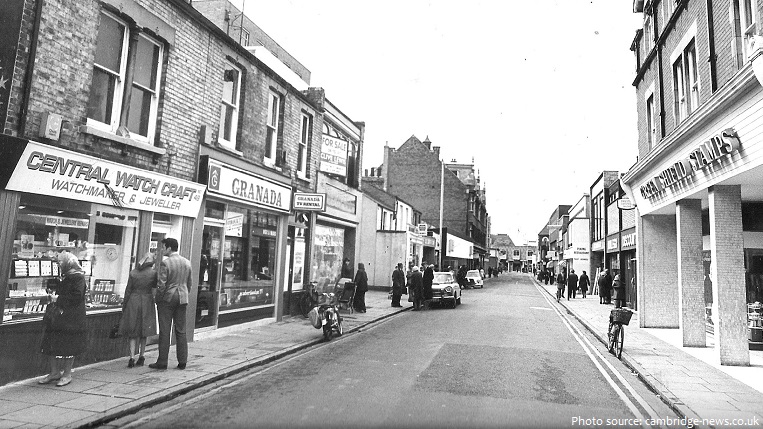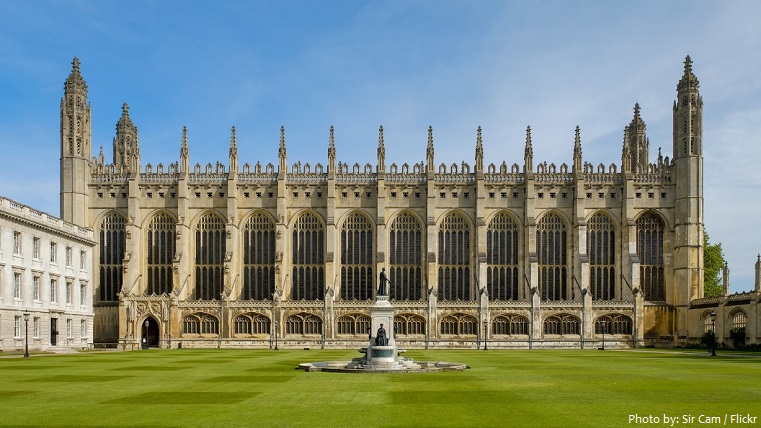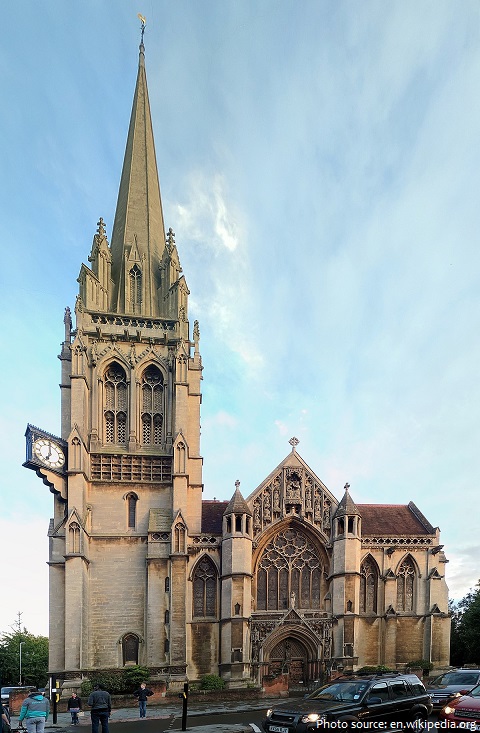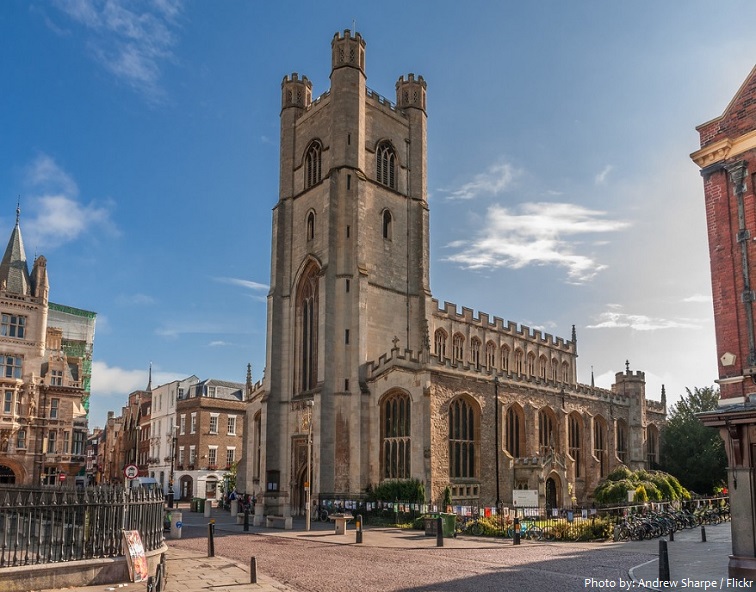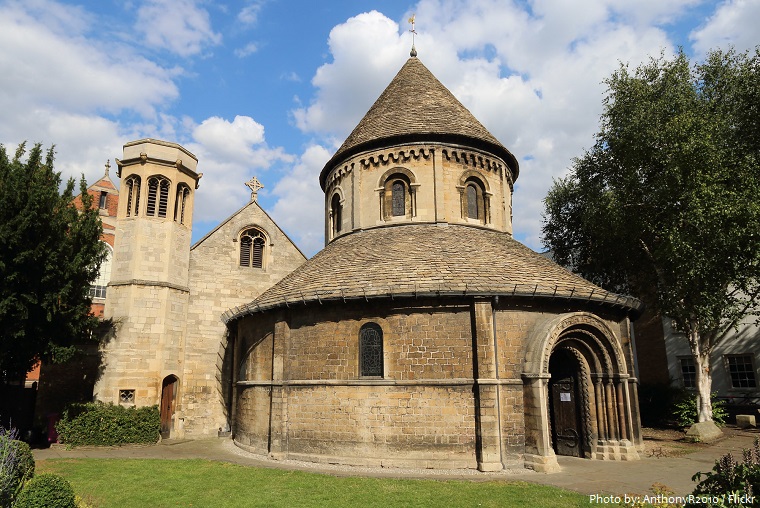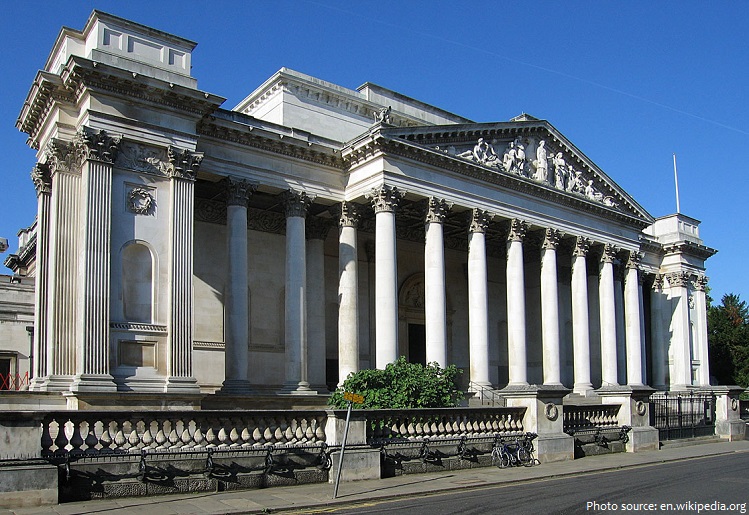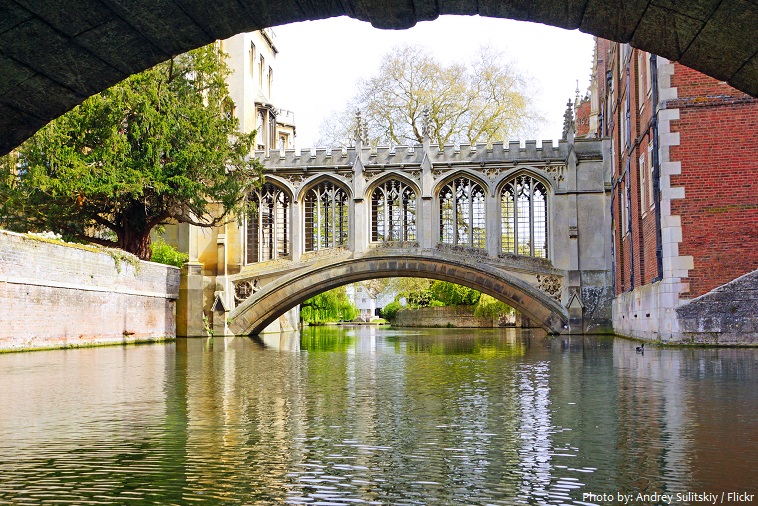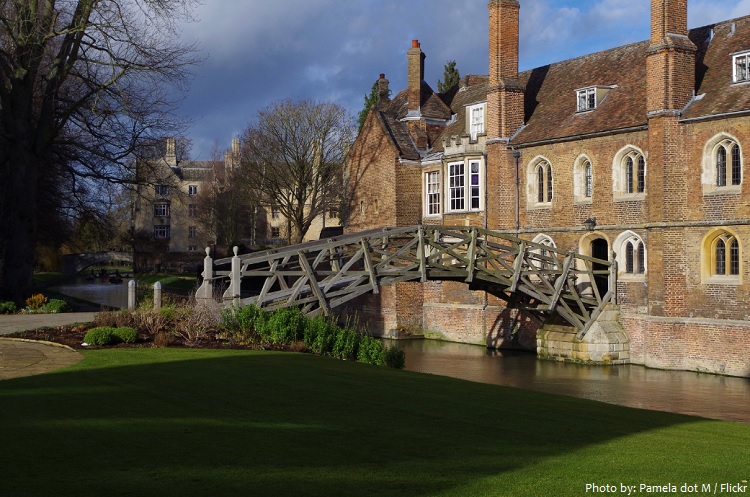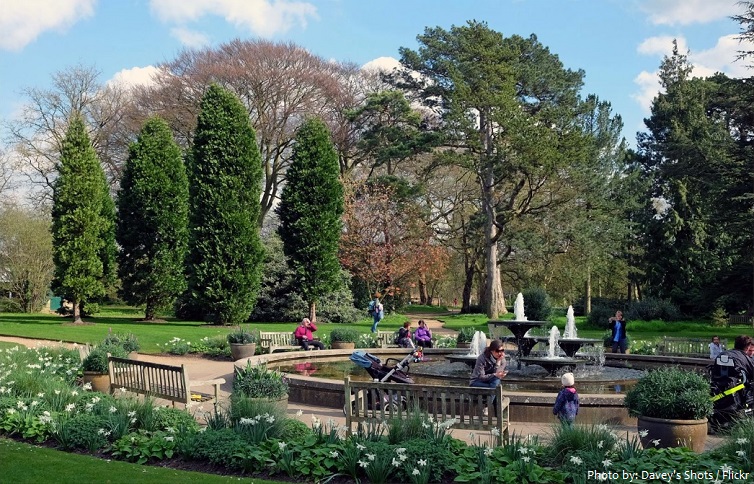Cambridge is a university city and the county town of Cambridgeshire, England.
It is located on the River Cam approximately 90 kilometers (55 miles) north of London.
As of September 2020, the population of Cambridge is about 125,000 people.
The city covers a total area of 41 square kilometers (16 square miles).
The average altitude is 6 metres (20 feet) above sea level.
In the bronze age and the iron age there were settlements on the site of Cambridge.
Then in the 1st century AD the Romans built a fort on Castle Hill. However this fort was abandoned at the beginning of the 5th century AD as the Roman Empire declined.
The modern city of Cambridge was founded in 875 when the Vikings conquered Eastern England. They created a fortified town called a burgh (from which we derive our word borough) on the site.
In the 10th century Cambridge was captured by the Saxons.
In 1068, two years after his conquest of England, William of Normandy built a castle on Castle Hill. By the time the town probably had a population of about 2,000. By the standards of the time it was a medium sized town.
In 1209, Cambridge University was founded by students escaping from hostile townspeople in Oxford.
Medieval Cambridge had a weekly market and by the early 13th century it also had a fair.
Cambridge played a significant role in the early part of the English Civil War as it was the headquarters of the Eastern Counties Association, an organisation administering a regional East Anglian army, which became the mainstay of the Parliamentarian military effort before the formation of the New Model Army.
In the 19th century, in common with many other English towns, Cambridge expanded rapidly, due in part to increased life expectancy and improved agricultural production leading to increased trade in town markets.
During the Second World War, Cambridge was an important centre for defence of the east coast.
Cambridge University is the second-oldest university in the English-speaking world (after Oxford) and the world’s fourth-oldest surviving university.
Modern Cambridge has been described as “perhaps the only true university town in England.” University and college buildings provide nearly all the outstanding architectural features.
King’s College Chapel is the chapel of King’s College in the University of Cambridge. It is considered one of the finest examples of late Perpendicular Gothic English architecture. The Chapel was built in phases by a succession of kings of England from 1446 to 1515, a period which spanned the Wars of the Roses and three subsequent decades. The Chapel’s large stained glass windows were not completed until 1531, and its early Renaissance rood screen was erected in 1532–36. The Chapel is an active house of worship, and home of the King’s College Choir. The Chapel is a significant landmark and a commonly used symbol of the city of Cambridge.
The Church of Our Lady of the Assumption and the English Martyrs, also known as the Church of Our Lady and the English Martyrs (OLEM), is an English Roman Catholic parish church located at the junction of Hills Road and Lensfield Road in southeast Cambridge. It is one of the largest Catholic churches in the United Kingdom, is designed in the Gothic revival style. The church was built between 1885 and 1890.
St Mary the Great is a Church of England parish and university church at the north end of King’s Parade in central Cambridge. It is known locally as Great St Mary’s or simply GSM to distinguish it from “Little St Mary’s”. It is one of the Greater Churches.
The Church of the Holy Sepulchre, generally known as The Round Church, is an Anglican church in the city of Cambridge. The church was built around 1130, its shape being inspired by the rotunda in the Church of the Holy Sepulchre, Jerusalem. It is one of the four medieval round churches still in use in England.
The Fitzwilliam Museum is the art and antiquities museum of the University of Cambridge. It was founded in 1816 under the will of Richard FitzWilliam, 7th Viscount FitzWilliam, and comprises one of the best collections of antiquities and modern art in western Europe. With over half a million objects and artworks in its collections, the displays in the Museum explore world history and art from antiquity to the present. The treasures of the museum include artworks by Monet, Picasso, Rubens, Vincent van Gogh, Rembrandt, Cézanne, Van Dyck, and Canaletto, as well as a winged bas-relief from Nimrud.
The Bridge of Sighs in Cambridge is a covered bridge at Cambridge University. It was built in 1831 and crosses the River Cam between the college’s Third Court and New Court. The architect was Henry Hutchinson. It is named after the Bridge of Sighs in Venice, although they have little architecturally in common beyond the fact that they are both covered. The bridge is one of Cambridge’s main tourist attractions and Queen Victoria is said to have loved it more than any other spot in the city.
The Mathematical Bridge is the popular name of a wooden footbridge in Cambridge. Its official name is simply the Wooden Bridge. The bridge was designed by William Etheridge, and built by James Essex in 1749. It has been rebuilt on two occasions, in 1866 and in 1905, but has kept the same overall design. Although it appears to be an arch, it is composed entirely of straight timbers built to an unusually sophisticated engineering design, hence the name.
The Cambridge University Botanic Garden is a botanical garden located in Cambridge. The garden covers an area of 16 hectares (40 acres). The site is almost entirely on level ground and in addition to its scientific value, the garden is highly rated by gardening enthusiasts. It holds a plant collection of over 8,000 plant species from all over the world to facilitate teaching and research. The garden was created for the University of Cambridge in 1831 by Professor John Stevens Henslow (Charles Darwin’s mentor) and was opened to the public in 1846.
Parker’s Piece is a 10-hectare 25-acre flat and roughly square green common located near the centre of Cambridge, regarded by some as the birthplace of the rules of Association Football. The two main walking and cycling paths across it run diagonally, and the single lamp-post at the junction is colloquially known as Reality Checkpoint.
Cambridge is at the heart of the high-technology Silicon Fen with industries such as software and bioscience and many start-up companies born out of the university. Over 40 per cent of the workforce have a higher education qualification, more than twice the national average. The Cambridge Biomedical Campus is one of the largest biomedical research clusters in the world.
Cambridge is completely enclosed by green belt as a part of a wider environmental and planning policy first defined in 1965 and formalised in 1992.
Pink Floyd are the most notable band with roots in Cambridge.

